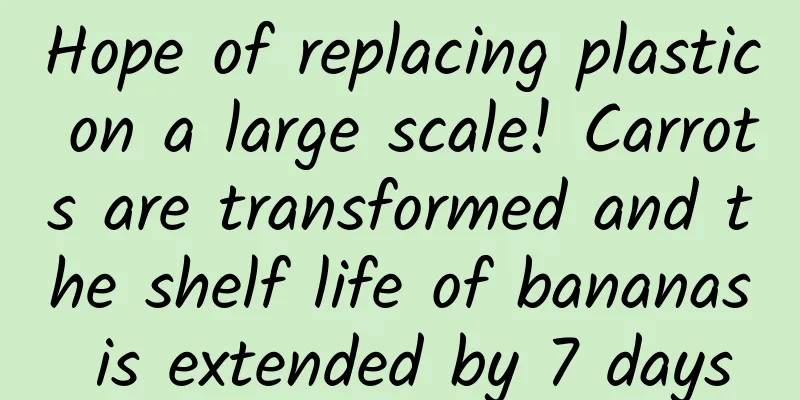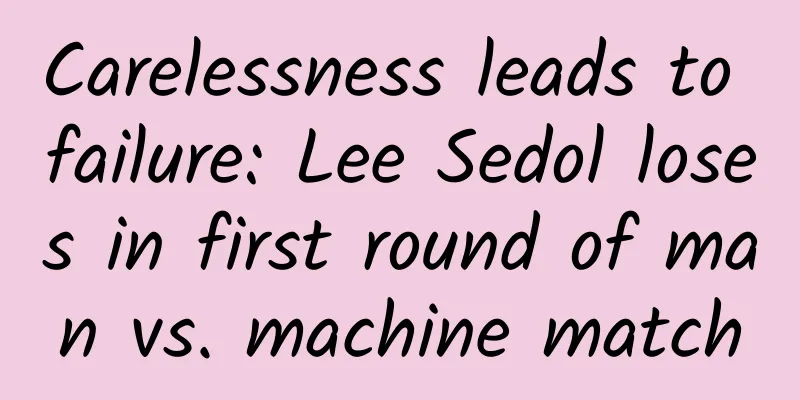Hope of replacing plastic on a large scale! Carrots are transformed and the shelf life of bananas is extended by 7 days

|
Influenced by the Chinese diet, China has always been the world's largest producer and consumer of fruits and vegetables, and its per capita fruit and vegetable consumption ranks first in the world. For example, as early as 2001, the average daily fruit and vegetable consumption of Chinese people was as high as 1,027 grams, accounting for 55% of the total daily food consumption. In recent years, my country's overall dietary structure has not changed much, and fruits and vegetables are still the largest category of daily food consumption. However, with the development of social economy and the improvement of living standards in recent years, people's requirements for the freshness of fruits are getting higher and higher. Especially with the popularity of online shopping and takeaway business, many fruits and vegetables are wrapped with layers of film or packaged in plastic boxes to keep them fresh. (Source: Pixabay) Although these measures ensure the freshness of fruits and vegetables, they also produce a large amount of plastic waste and microplastics, which not only pollute the environment but are also harmful to our health. Recently, in order to reduce plastic pollution, Professor Gustav Nyström and Professor Tanja Zimmermann from the Swiss Federal Laboratories for Materials Science and Technology worked together to lead a research team to successfully produce economical fibrillated cellulose nanofibers from carrot and vegetable residues, and prepared them into a special spray. In the experiment, the researchers confirmed that this spray can form a protective fiber coating on the surface of fruits and vegetables, and extend the shelf life of bananas by 7 days. Professor Gustav Nyström said, "This biological protective coating is converted from cellulose in natural fruit and vegetable residues. It is completely harmless to the human body and very easy to clean. Therefore, it can help people extend the shelf life of fruits and vegetables and reduce food waste. However, our biggest goal is to hope that it can replace plastic packaging and reduce environmental pollution." The research, titled “Sustainable Cellulose Nanofiber Films from Carrot Pomace as Sprayable Coatings for Food Packaging Applications,” was published in the latest issue of ACS Sustainable Chemistry & Engineering. Cellulose, the most abundant biopolymer on Earth More than 100 years ago, Leo Baekeland, who was honored as the "Father of Plastics," invented plastic. This material, once known as the greatest invention of the 20th century, has brought great convenience to mankind. But 100 years later, people suddenly discovered that this strong and durable material takes hundreds of years to degrade, seriously polluting the earth's environment, but humans can no longer do without this material. As early as 2010, the world produced 270 million tons of plastic each year. By 2019, the world produced 400 million tons of plastic each year. It is estimated that by 2030, the global plastic production will reach 700 million tons. At the same time, the current global plastic recycling rate is less than 10%, which means that more than 90% of plastic will be abandoned. (Source: Pixabay) In recent years, with the improvement of environmental protection awareness, people have been committed to finding a high-performance renewable material to replace plastic in order to move towards a sustainable future. As the most abundant renewable biopolymer on earth, cellulose is a promising candidate. It can be said that cellulose is the most abundant biopolymer on earth, widely found in trees, crops and other biomass. As a renewable material, fiber is not only widely distributed and sustainable, but its unique multi-dimensional structure and multiple functions are very consistent with human production needs. In particular, the fibrillated cellulose generated by decomposing cellulose has variable and controllable size, especially when extended to the nanoscale, and has excellent functional properties in mechanics, optics, heat and fluidics. For example, in terms of mechanical properties, the theoretical modulus of cellulose is about 100-200 GPa, and the tensile strength is about 4.9-7.5 GPa, which is higher than most metals, alloys, polymers and ceramics. Therefore, more and more companies are trying bioplastics and sustainable materials in the fields of product packaging, textiles and renewable consumer goods. Unlike traditional plastics, bioplastics made from fibrillated cellulose can be easily degraded by bacteria and fungi in the soil. Its excellent mechanical strength, high heat resistance and chemical corrosion resistance also show that it does have the potential to replace traditional plastics. However, although fibrillated cellulose has good functionality and excellent biodegradability, its production cost is high and it may not be environmentally friendly. This has also led to the fact that although people have been calling for biodegradable materials in recent years, their actual applications are still limited. A more affordable option Currently, the world's leading fibrillated cellulose nanofiber producers generally use wood pulp as raw material because wood is widely available and quality control is relatively easy. However, in Professor Gustav Nyström's opinion, it is not wise to use wood pulp to produce fibrillated cellulose nanofibers. First, wood is widely used in human life, and repeated preparation is not environmentally friendly; second, wood is expensive and the cost is high; finally, the lignin content in wood is high, and wood fibers are tightly bound, making separation and extraction difficult. Therefore, Professor Gustav Nyström has been trying to find new raw materials for the production of fibrillated cellulose nanofibers for a long time. Since the wood cellulose in agricultural products and food waste has very low binding density and very low lignin content, the cost of producing fibrillated cellulose nanofibers is also lower, making it a very promising raw material. Among them, carrots are a simple and easily available product. According to statistics, in 2019, a total of 45 million tons of carrots were produced worldwide, most of which were used for juicing, and the carrot residue left after juicing contained 80% cellulose. (Source: ACS Sustainable Chemistry & Engineering) Previously, preliminary studies have shown that it is feasible to use carrot pomace to produce fibrillated cellulose nanofibers. At the same time, the quality of fibrillated cellulose nanofibers derived from carrot pomace is no different from that of fibrillated cellulose nanofibers derived from wood. More importantly, the energy required to prepare fibrillated cellulose nanofibers from carrot pomace is much lower than that from wood. However, carrot pomace is prone to deterioration during storage, so it is difficult to ensure the quality control of raw materials. Therefore, Professor Gustav Nyström separated fibrillated cellulose nanofibers from fresh carrot pomace and carrot pomace that had been stored for 3 weeks, and prepared them into suspensions for food packaging and preservation. The results showed that when carrot residue was used to prepare fibrillated cellulose nanofibers, whether the carrot residue was fresh or not would not affect the performance of the fibrillated cellulose nanofibers. Specifically, the researchers found that the fibrillated cellulose nanofiber suspensions prepared from these two raw materials had good preservation ability and could extend the shelf life of bananas by 7 days. Figure | Comparison of the shelf life of bananas (Source: Swiss Federal Laboratories for Materials Science and Technology) In addition, Professor Gustav Nyström also found that when using carrot pomace to prepare fibrillated cellulose nanofibers, the use of bleaching pretreatment can successfully remove lignin and other residues in the carrot pomace, significantly reducing the energy required for fiberization without affecting the quality of the fibrillated cellulose nanofibers. It is reported that the fibrillated cellulose nanofiber technology developed by Professor Gustav Nyström is currently being tested and improved in collaboration with retail giant Lidl Switzerland and another fruit and vegetable supplier. This new fibrillated cellulose nanofiber fresh-keeping coating. References: https://pubs.acs.org/doi/10.1021/acssuschemeng.1c06345 https://phys.org/news/2022-01-ecological-coating-bananas.html Written by: Zhu Hengheng Editor: Wang Haha Layout: Li Xuewei Academic headlines |
<<: Have a healthy new year! Let’s check the “small hidden dangers” in the refrigerator first
>>: What did you eat for lunch the day before yesterday? Maybe it’s a good thing that you forgot…
Recommend
Amazing marine diatoms! Scientists discover new mechanism of diatoms using light energy
Produced by: Science Popularization China Author:...
Subvert your cognition! Is it true that a vegetative person can tickle himself?
Recently, a saying has been circulating on a cert...
Growth strategy of the Douyin App
As Douyin exploded in 2019, more and more attenti...
iPhone can still be tracked even after it is turned off! Netizens: Don’t worry if your phone is lost
It has been a while since Apple announced the iOS...
Integrated marketing communication full case skills!
Let me first summarize it in a brief outline. A c...
There is a new way to play during the Spring Festival: WeChat can send "video red envelopes"
[[377500]] Following the opening of personally cu...
[Making a living by speculating in antiques 2007] Dark horse super large band tactics
[Making a living by speculating in antiques 2007]...
Traffic sources and strategies for Amazon automatic advertising!
No matter how long you have been working on Amazo...
Do you really understand the hardships of operating new media in an enterprise?
NO.1 Corporate self-media is job self-media, not ...
45° Angle Law: The unspoken rules of brand, platform and IP
There are always various unspoken rules in the wo...
How to use classified information for online marketing promotion?
Classified information promotion refers to activi...
Volkswagen: Volkswagen will deliver 2.1989 million vehicles in China in 2024, a year-on-year decrease of 8.3%
Volkswagen released its global delivery data for ...
World Photography Day丨Getting close to aerospace technology and experiencing the great power
Dreams come true Tianzhou first flight Shenba Tra...
There is a lot to learn about small fans! Get the thousand-year history of fans in one article and see how the ancients spent the summer elegantly.
About Summer A cool-down device is a must --"...
Changba Chen Hua: How I increased the number of Changba users to 260 million!
I am a serial entrepreneur . My first project was...









